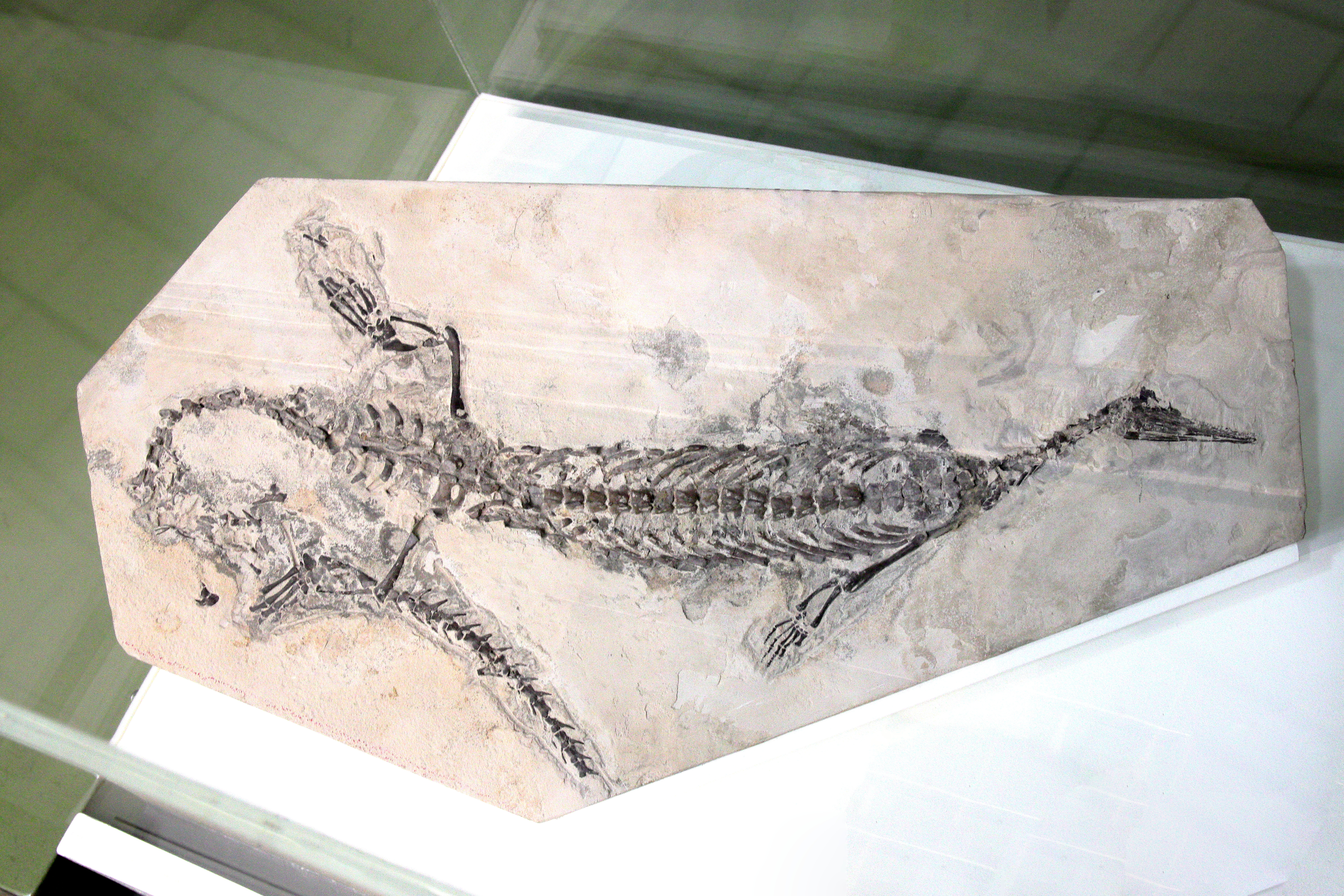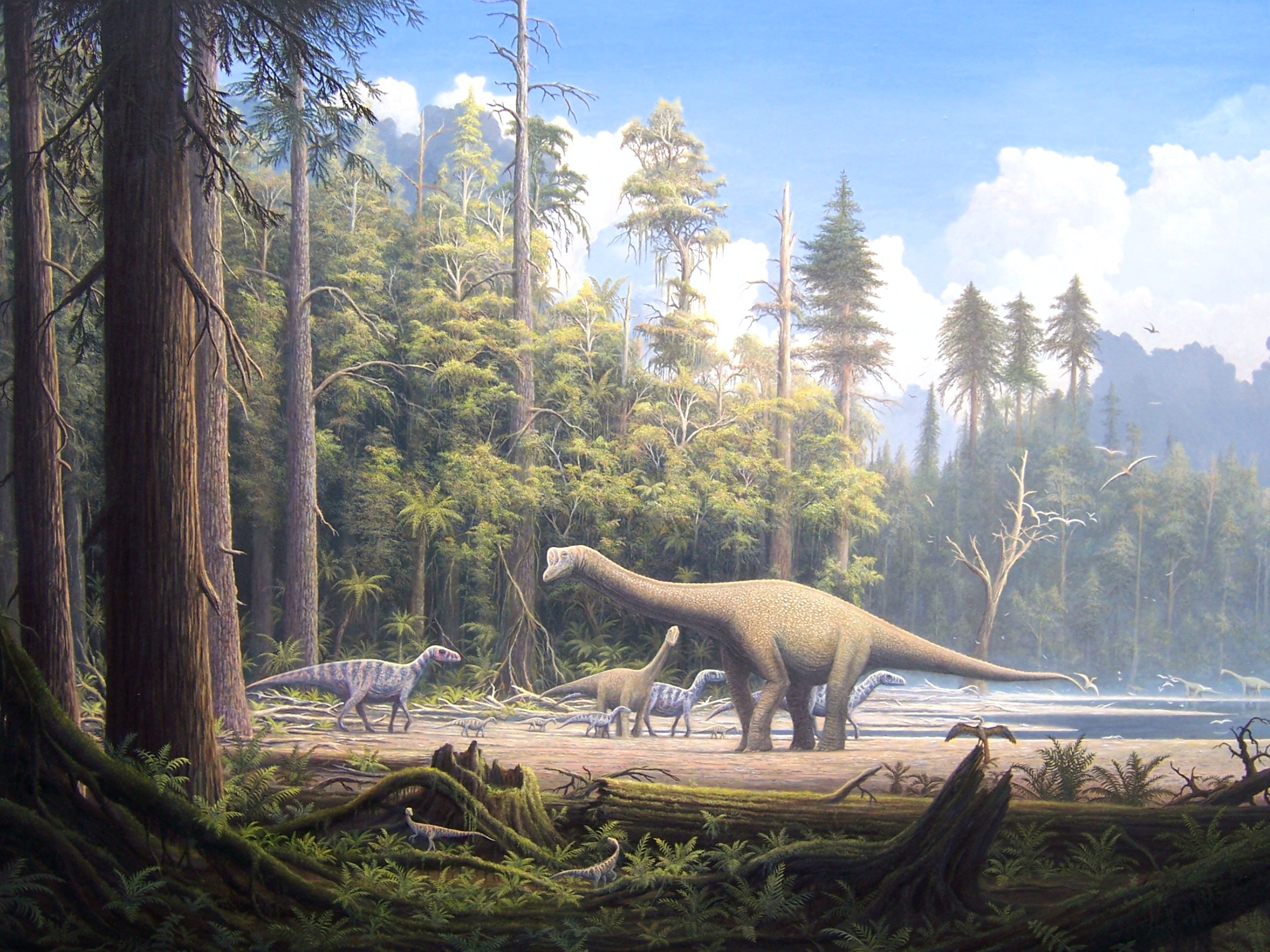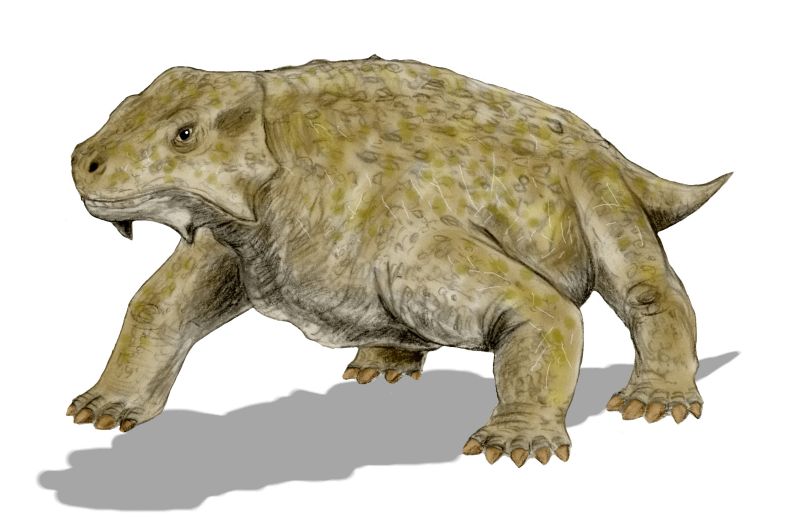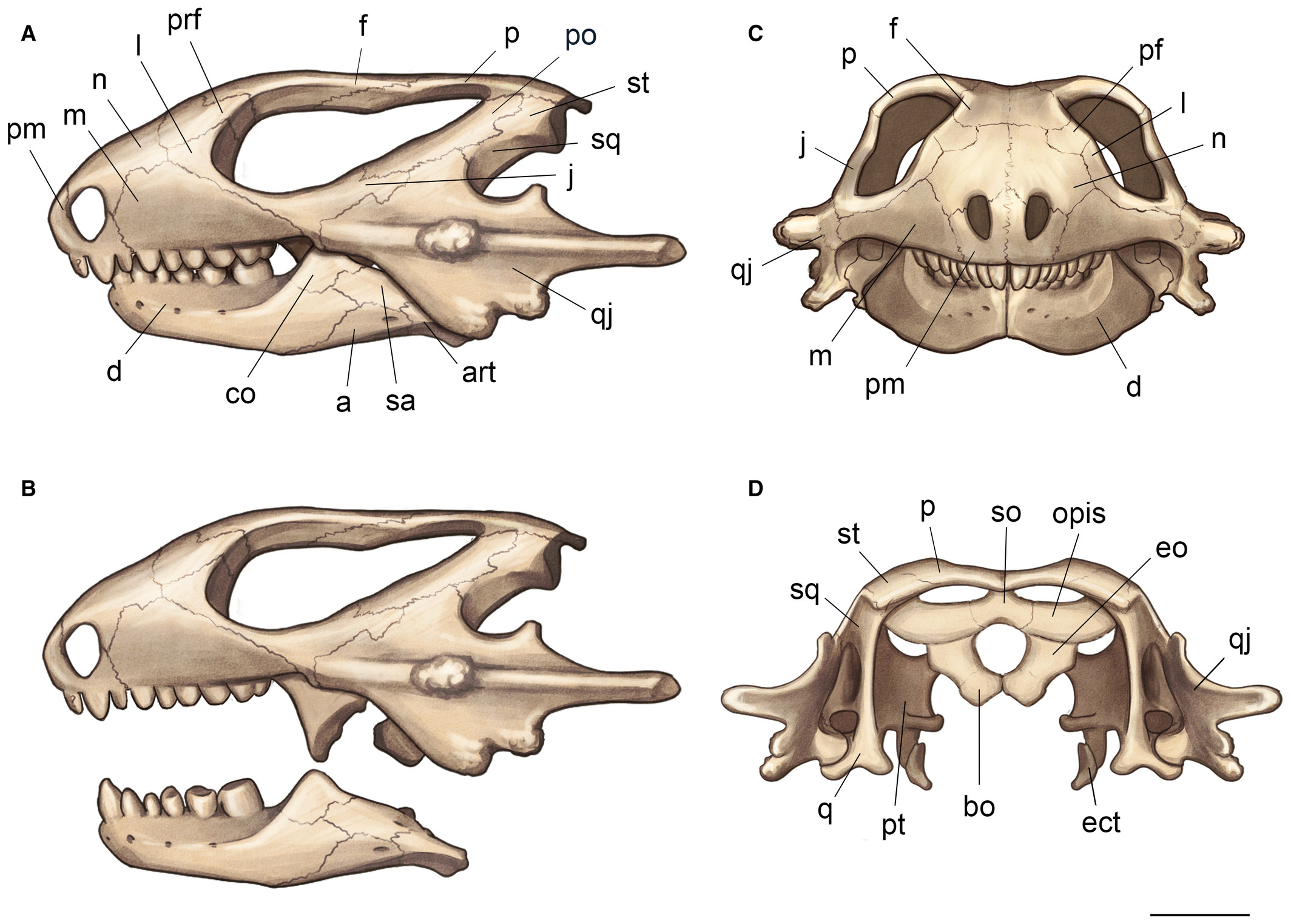|
Parareptile
Parareptilia ("near-reptiles") is an extinct group of Basal (phylogenetics), basal Sauropsida, sauropsids ("Reptile, reptiles"), traditionally considered the sister taxon to Eureptilia (the group that likely contains all living reptiles and birds). Parareptiles first arose near the end of the Carboniferous, Carboniferous period and achieved their highest diversity during the Permian, Permian period. Several ecological innovations were first accomplished by parareptiles among reptiles. These include the first reptiles to return to marine ecosystems (mesosaurs), the first Bipedalism, bipedal reptiles (Bolosauridae, bolosaurids such as ''Eudibamus''), the first reptiles with advanced hearing systems (Nycteroleteridae, nycteroleterids and others), and the first large herbivorous reptiles (the pareiasaurs). The only parareptiles to survive into the Triassic, Triassic period were the Procolophonoidea, procolophonoids, a group of small generalists, omnivores, and herbivores. The largest f ... [...More Info...] [...Related Items...] OR: [Wikipedia] [Google] [Baidu] |
Mesosaur
Mesosaurs ("middle lizards") were a group of small aquatic reptiles that lived during the early Permian period ( Cisuralian), roughly 299 to 270 million years ago. Mesosaurs were the first known aquatic reptiles, having apparently returned to an aquatic lifestyle from more terrestrial ancestors. It is uncertain which and how many terrestrial traits these ancestors displayed; recent research cannot establish with confidence if the first amniotes were fully terrestrial, or only amphibious. Most authors consider mesosaurs to have been aquatic, although adult animals may have been amphibious, rather than completely aquatic, as indicated by their moderate skeletal adaptations to a semiaquatic lifestyle.Pablo Nuñez Demarco et al. Was Mesosaurus a Fully Aquatic Reptile? Front. Ecol. Evol, published online July 27, 2018; doi: 10.3389/fevo.2018.00109 Similarly, their affinities are uncertain; they may have been among the most basal sauropsids or among the most basal parareptiles (in ... [...More Info...] [...Related Items...] OR: [Wikipedia] [Google] [Baidu] |
Eureptilia
Sauropsida (Greek for "lizard faces") is a clade of amniotes, broadly equivalent to the class Reptilia, though typically used in a broader sense to also include extinct stem-group relatives of modern reptiles and birds (which, as theropod dinosaurs, are nested within reptiles as more closely related to crocodilians than to lizards or turtles).Gauthier J.A. (1994): ''The diversification of the amniotes''. In: D.R. Prothero and R.M. Schoch (ed.) Major Features of Vertebrate Evolution: 129–159. Knoxville, Tennessee: The Paleontological Society. The most popular definition states that Sauropsida is the sibling taxon to Synapsida, the other clade of amniotes which includes mammals as its only modern representatives. Although early synapsids have historically been referred to as "mammal-like reptiles", all synapsids are more closely related to mammals than to any modern reptile. Sauropsids, on the other hand, include all amniotes more closely related to modern reptiles than to mamma ... [...More Info...] [...Related Items...] OR: [Wikipedia] [Google] [Baidu] |
Delorhynchus Cifellii
''Delorhynchus'' is an extinct genus of lanthanosuchoid parareptile known from the late Early Permian (Artinskian age) Garber Formation of Comanche County, Oklahoma. It contains three species: the type species ''D. priscus'' is based on a series of maxillae. The second species to be described, ''D. cifellii'', is known from a larger number of well-preserved skulls and skeletal material. The third species, ''D. multidentatus'', is based on a fragmentary skull with several rows of teeth on its jaw. Discovery The type species, ''D. priscus,'' was first described and named by Richard C. Fox in 1962. The generic name "''Delorhynchus''" is derived from Greek ''rhynchos''/''ρυγχος'', meaning "beak" (a common suffix for extinct reptile genera names). The specific name of the type species ''D. priscus'' is derived from Greek ''πρίσκος'', meaning "ancient" or "venerable" in reference to the fragmentary nature of the known remains. ''D. priscus'' is known from the holotype ... [...More Info...] [...Related Items...] OR: [Wikipedia] [Google] [Baidu] |
Acleistorhinid
Acleistorhinidae is an extinct family of Late Carboniferous and Early Permian-aged (Moscovian to Kungurian stage) parareptiles. It is defined as a node based clade including the last common ancestor of '' Acleistorhinus pteroticus'' and '' Colobomycter pholeter'' and all its descendants. Acleistorhinids are most diverse from the Richards Spur locality of the Early Permian of Oklahoma. Richards Spur acleistorhinids include '' Acleistorhinus'', '' Colobomycter'', ''Delorhynchus'', ''Feeserpeton'' and '' Klastomycter''. Other taxa include ''Carbonodraco'' from the Late Carboniferous of Ohio and ''Karutia'' from the Early Permian of Brazil. Acleistorhinidae is commonly considered a subgroup of lanthanosuchoids, related to taxa such as '' Chalcosaurus'', ''Lanthaniscus'' and ''Lanthanosuchus''. However, a re-examination of parareptile phylogeny conducted by Cisneros ''et al.'' (2021) argued that lanthanosuchids were not closely related to acleistorhinids. The phylogenetic analysis con ... [...More Info...] [...Related Items...] OR: [Wikipedia] [Google] [Baidu] |
Sauropsida
Sauropsida (Greek language, Greek for "lizard faces") is a clade of amniotes, broadly equivalent to the Class (biology), class Reptile, Reptilia, though typically used in a broader sense to also include extinct stem-group relatives of modern reptiles and birds (which, as theropod dinosaurs, are nested within reptiles as more closely related to crocodilians than to lizards or turtles).Gauthier J.A. (1994): ''The diversification of the amniotes''. In: D.R. Prothero and R.M. Schoch (ed.) Major Features of Vertebrate Evolution: 129–159. Knoxville, Tennessee: The Paleontological Society. The most popular definition states that Sauropsida is the Sister group, sibling taxon to Synapsida, the other clade of amniotes which includes mammals as its only modern representatives. Although early synapsids have historically been referred to as "mammal-like reptiles", all synapsids are more closely related to mammals than to any modern reptile. Sauropsids, on the other hand, include all amniotes m ... [...More Info...] [...Related Items...] OR: [Wikipedia] [Google] [Baidu] |
Reptile
Reptiles, as commonly defined, are a group of tetrapods with an ectothermic metabolism and Amniotic egg, amniotic development. Living traditional reptiles comprise four Order (biology), orders: Testudines, Crocodilia, Squamata, and Rhynchocephalia. About 12,000 living species of reptiles are listed in the Reptile Database. The study of the traditional reptile orders, customarily in combination with the study of modern amphibians, is called herpetology. Reptiles have been subject to several conflicting Taxonomy, taxonomic definitions. In Linnaean taxonomy, reptiles are gathered together under the Class (biology), class Reptilia ( ), which corresponds to common usage. Modern Cladistics, cladistic taxonomy regards that group as Paraphyly, paraphyletic, since Genetics, genetic and Paleontology, paleontological evidence has determined that birds (class Aves), as members of Dinosauria, are more closely related to living crocodilians than to other reptiles, and are thus nested among re ... [...More Info...] [...Related Items...] OR: [Wikipedia] [Google] [Baidu] |
Procolophonomorpha
Procolophonomorpha is an order containing most parareptiles. Many papers have applied various definitions to the name, though most of these definitions have since been considered synonymous with modern parareptile clades such as Ankyramorpha and Procolophonia. The current definition of Procolophonomorpha, as defined by Modesto, Scott, & Reisz (2009), is that of as a stem-based group containing '' Procolophon'' and all taxa more closely related to it than to '' Milleretta''. It constitutes a diverse assemblage that includes a number of lizard-like forms, as well as more diverse types such as the pareiasaurs. Lee 1995, 1996, 1997 argues that turtles evolved from pareiasaurs, but this view is no longer considered likely. Rieppel and deBraga 1996 and deBraga and Rieppel, 1997 argue that turtles evolved from sauropterygians, and there is both molecular and fossil (''Pappochelys'') evidence for the origin of turtles among diapsid reptiles. Classification The following cladogram is s ... [...More Info...] [...Related Items...] OR: [Wikipedia] [Google] [Baidu] |
Pareiasaur
Pareiasaurs (meaning "cheek lizards") are an extinct clade of large, herbivorous parareptiles. Members of the group were armoured with osteoderms which covered large areas of the body. They first appeared in southern Pangea during the Middle Permian, before becoming globally distributed during the Late Permian. Pareiasaurs were the largest reptiles of the Permian, some reaching sizes over , equivalent to the largest contemporary therapsids. Pareiasaurs became extinct in the end-Permian mass extinction event. Description Pareiasaurs ranged in size from long, with some species estimated to exceed in body mass. The limbs of many parieasaurs were extremely robust, likely to account for the increased stress on their limbs caused by their typically sprawling posture. The cow-sized '' Bunostegos'' differed from other pareiasaurs by having a more upright limb posture, being amongst the first amniotes to develop this trait. Pareiasaurs were protected by bony scutes called osteoderms ... [...More Info...] [...Related Items...] OR: [Wikipedia] [Google] [Baidu] |
Nyctiphruretus Acudens
''Nyctiphruretus'' (meaning "Guardian of the Night") is an extinct genus of nyctiphruretid parareptile known from the Guadalupian series (middle Permian) of European Russia. Many fossils of the type species, ''N. acudens'', were found well preserved near the Mezen River of European Russia in various stages of growth. The dentition identified that ''Nyctiphruretus'' is a herbivore. Based on the large numbers of individuals found and the sediment that they were found in, it appears that their diet consisted of aquatic plants. Adults discovered averaged 36 cm in length with a 4.4 cm skull that was crushed but recognisable. ''Nyctiphruretus'' was first named by Efremov in 1938 and the type species is ''Nyctiphruretus acudens''. In 2002, a second species was named by V. V. Bulanov. ''N. optabilis'' is known from a single jaw, also from Russia, Eastern Europe. Lee (1997) named the order Nyctiphruretia and the family Nyctiphruretidae, to include ''Nyctiphruretus''. While the ... [...More Info...] [...Related Items...] OR: [Wikipedia] [Google] [Baidu] |
Nyctiphruretid
Nyctiphruretidae is an extinct family of hallucicranian parareptiles known from the late Early to the late Middle Permian of European Russia and south-central United States. Nyctiphruretidae was named by Efremov in 1938. The type genus is '' Nyctiphruretus'' known from several Middle Permian locations in European Russia. Michael S. Y. Lee in 1997 placed the family in the larger clade Nyctiphruretia. The order was defined to include both nyctiphruretids and nycteroleterids. However, recent cladistic analyses suggest that nycteroleterids are more closely related to the Pareiasauria instead, thus making ''Nyctiphruretus'' the only genus of its order. In 2014, MacDougall & Reisz described and named a second genus of Nyctiphruretidae, ''Abyssomedon'', from the middle Leonardian stage of the late Early Permian of Comanche County, Oklahoma, south-central United States. It contains a single species, ''A. williamsi'', which represents the first nyctiphruretid known from North America ... [...More Info...] [...Related Items...] OR: [Wikipedia] [Google] [Baidu] |
Procolophonid
Procolophonidae is an extinct family of small, lizard-like parareptiles known from the Late Permian to Late Triassic that were distributed across Pangaea, having been reported from Europe, North America, China, South Africa, South America, Antarctica and Australia. The most primitive procolophonids were likely insectivorous or omnivorous, more derived members of the clade developed bicusped molars, and were likely herbivorous feeding on high fiber vegetation or durophagous omnivores. Many members of the group are noted for spines projecting from the quadratojugal bone of the skull, which likely served a defensive purpose as well as possibly also for display. At least some taxa were likely fossorial burrowers. While diverse during the Early and Middle Triassic, they had very low diversity during the Late Triassic, and were extinct by the beginning of the Jurassic. Phylogeny The family is defined as all taxa more closely related to ''Procolophon trigoniceps'' than to ''Owenetta ru ... [...More Info...] [...Related Items...] OR: [Wikipedia] [Google] [Baidu] |






